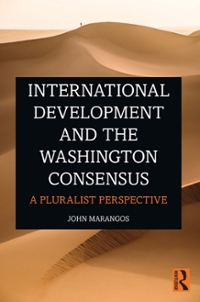is required given the state of the economy . In other words , if the economy is in state : ( where 0 $ s g 1) the principal would like to implement a decision d = s as the principal's utility V , (or loss from the maximum possible profit ) is given by V, - - s - d . With such a utility function , maximizing utility really means making the loss as small as possible . For simplicity , the two possible levels of s are 0.4 and 0.7, and each occurs with probability 0.5 . There are two division managers A and B who each have their own biases . Manager A always wants a decision of 0.4 to be implemented , and incurs a disutility UA that is increasing the further from 0.4 the decision d that is actually implement , specifically - - 10.4 - d . Similarly , Manager B always wants a decision of 0.7 to be implement , and incurs a disutility Us that is (linearly ) increasing in the distance between 0.7 and the actually decision that is implemented - that is U, - - 0.7 - d Each manager is completely informed , so that each of them knows exactly what the state of the economy s is. (a) The principal can opt to centralize the decision but before making her decision given she does not know what the state of the economy is - she asks for recommendations from her two division managers . Centralization means that the principal commits to implement a decision that is the average of the two recommendations she received from her managers . The recommendations are gent simultaneously and cannot be less than 0 or greater than 1. Assume that the state of the economy s = 0.7 . What is the report (or recommendation that Manager A will send if Manager B always truthfully reports s ? (b) Again the principal is going to centralise the decision and will ask for a recommendation from both managers , as in the previous question . Now , however assume that both managers strategically make their recommendations . What are the recommendations ra and ry made by the Managers A and B, respectively , in a Nash equilibrium ? (c) What is the principal's expected utility (or loss ) under centralized decision making (as in part b) ? (d) Can you design a contract for both of the managers that can help the principal implement their preferred option ? Why might this contract be problematic in the real world ? 4. Consider a variant on the Aghion and Tirole (1997 ) model . Poppy , the principal and Aiden , the agent , together can decide on implementing a new project , but both are unsure of which project is good and which is really bad . Given this , if no one is informed they will not do any project and both parties get zero . Both Poppy and Aiden can , however , put effort into discovering a good project . Poppy can put in effort E; this costs her effort cost - E ', but it gives her a probability of being ECOS3003 Problem set 2 of 3







